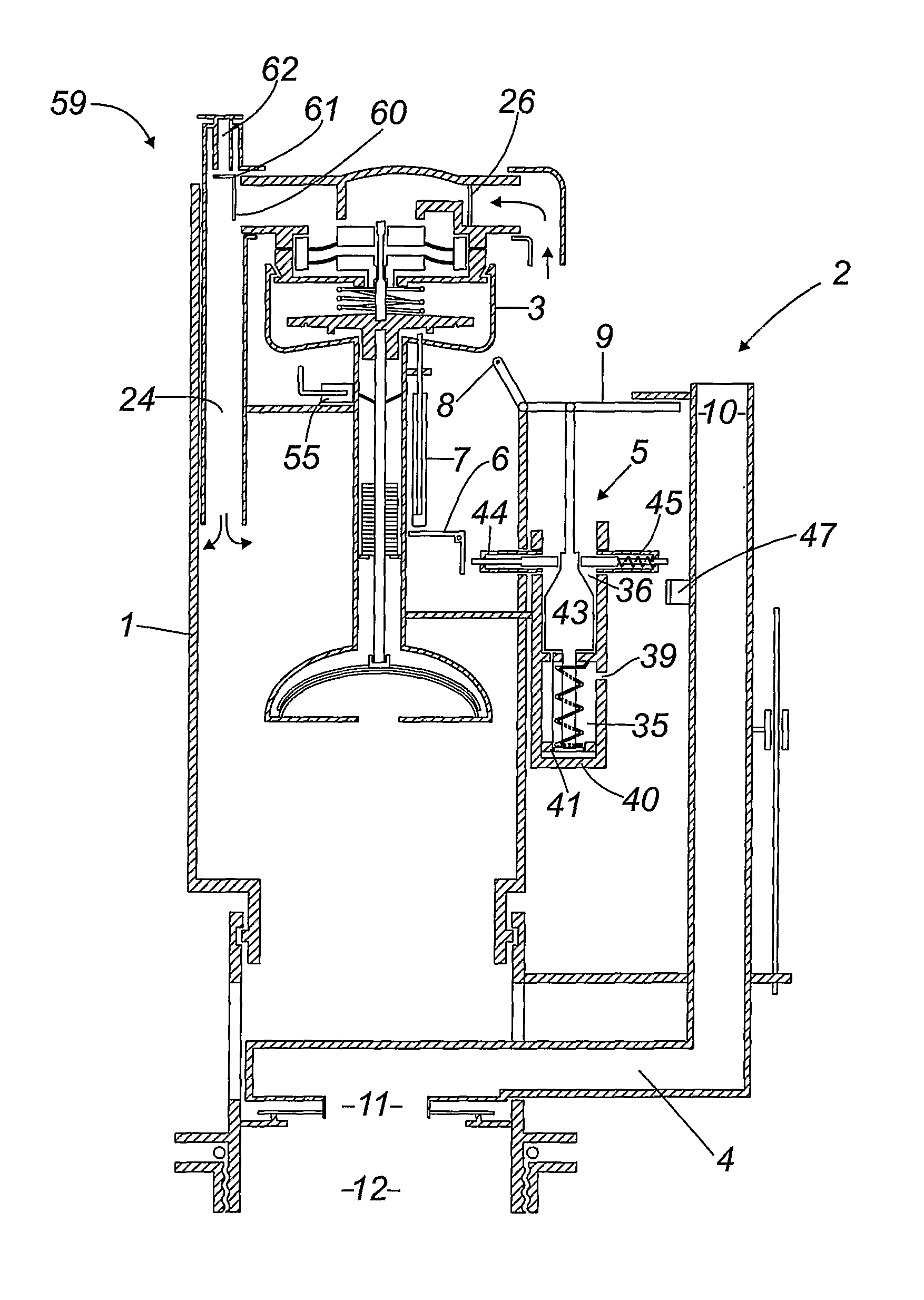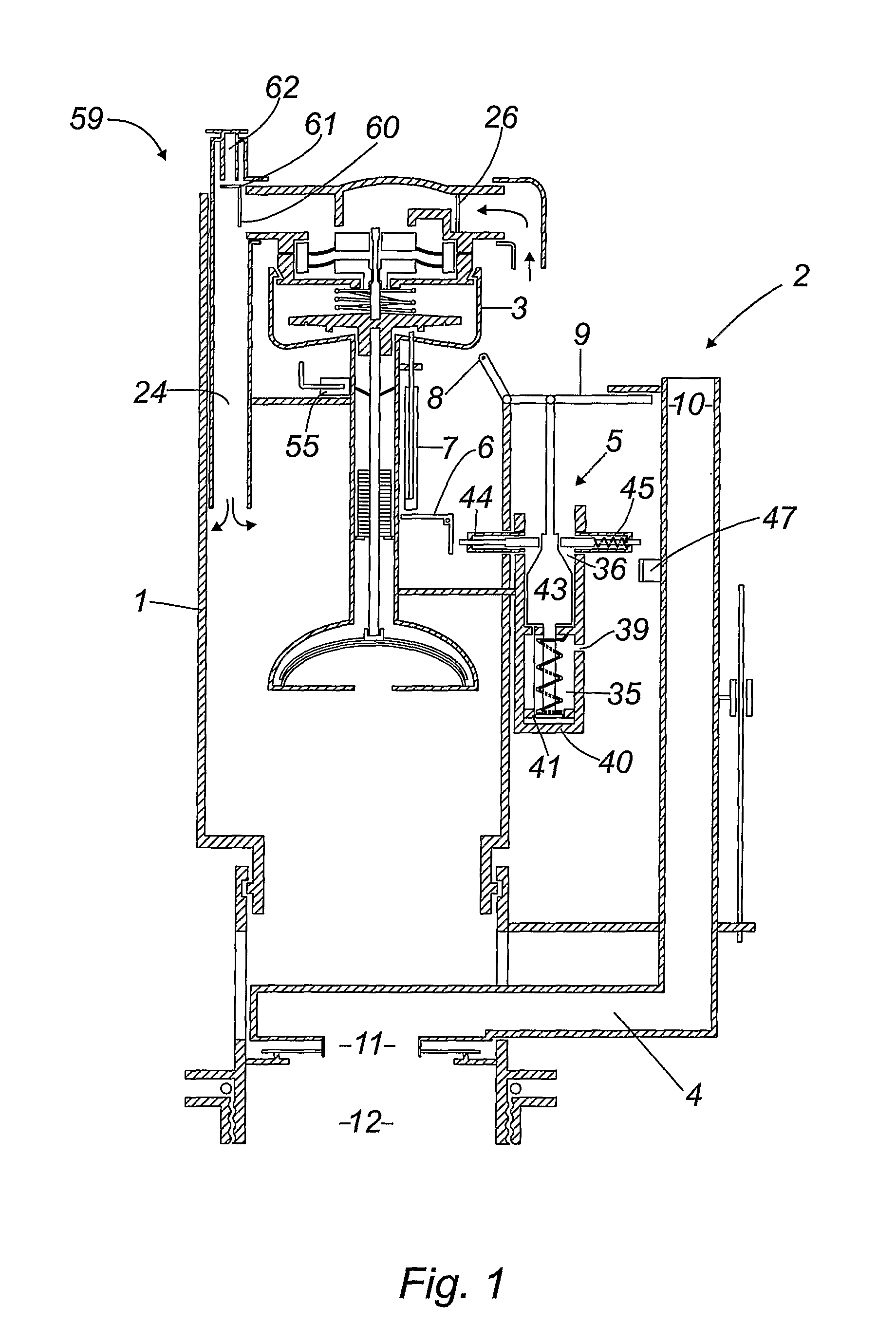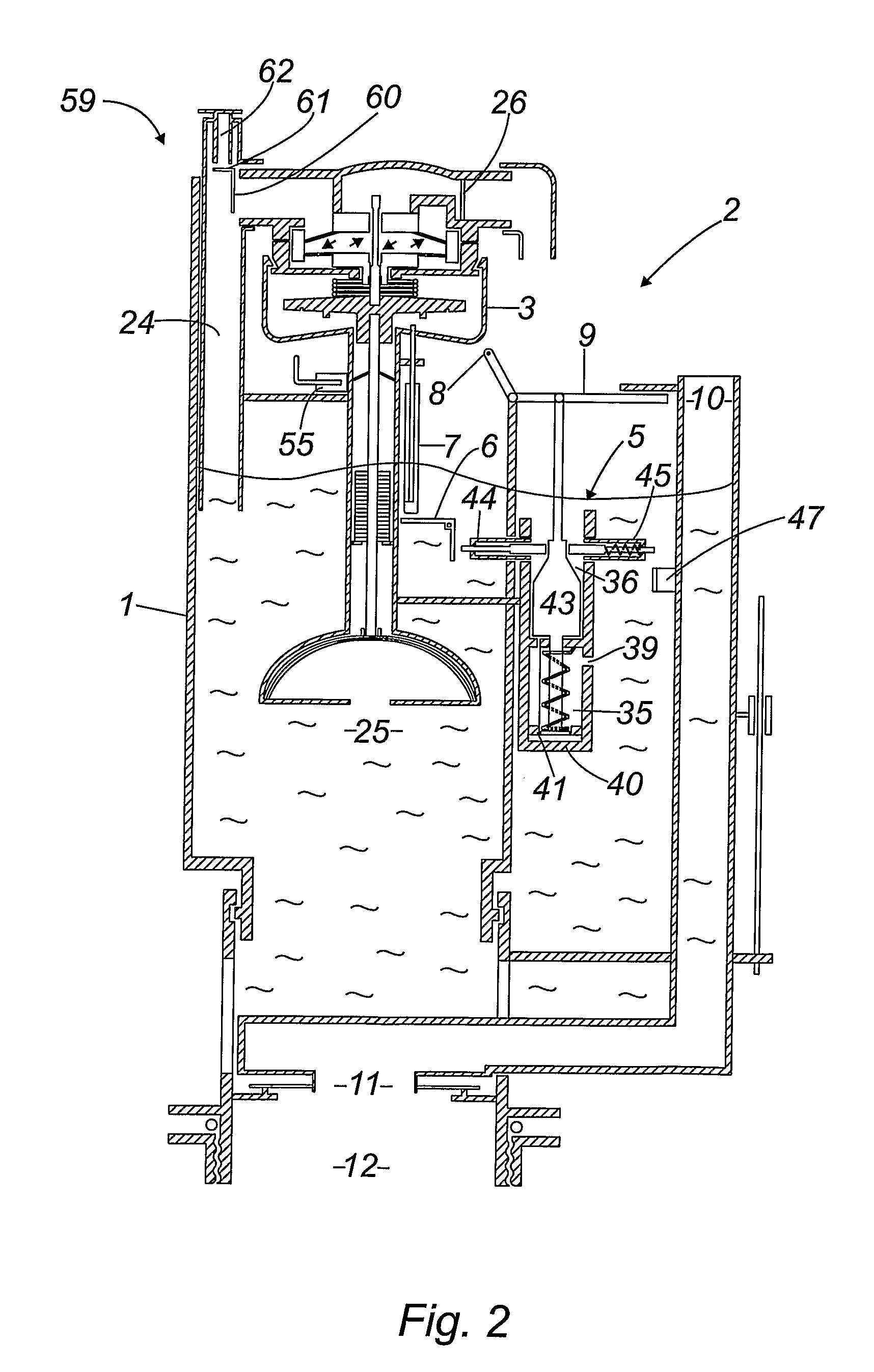Flushing valve
a technology of flushing valve and valve body, which is applied in the field of flushing valves, can solve the problem that the valve does not allow the cistern
- Summary
- Abstract
- Description
- Claims
- Application Information
AI Technical Summary
Benefits of technology
Problems solved by technology
Method used
Image
Examples
Embodiment Construction
[0078]In order to assist understanding of the present invention, FIGS. 1 to 3 presents schematic diagrams of a cistern 1, comprising a flushing valve 2 in accordance with an aspect of the present invention, within three separate modes of operation. The flushing valve 1 can be seen to comprise three separate mechanically connected valves namely:[0079]1) an inlet valve 3 in the form of a double diaphragm pressure head valve;[0080]2) an outlet valve 4 in the form of a drop valve; and[0081]3) a timer valve 5 mechanically connected to both the inlet and outlet valves.
[0082]The timer valve 5 is connected to the inlet valve 3 via an L-shaped lever 6 and a first rod 7. A lever 8 mechanically connects the timer valve 5, via a second rod 9 to the overflow tube 10 of the outlet drop valve 4. The outlet drop valve 4 further comprises a plug 11, made of a rubber, for control of the opening and closing an outlet tube 12 of the cistern 1. As described in detail below, the timer valve 5 is employed...
PUM
 Login to View More
Login to View More Abstract
Description
Claims
Application Information
 Login to View More
Login to View More - R&D
- Intellectual Property
- Life Sciences
- Materials
- Tech Scout
- Unparalleled Data Quality
- Higher Quality Content
- 60% Fewer Hallucinations
Browse by: Latest US Patents, China's latest patents, Technical Efficacy Thesaurus, Application Domain, Technology Topic, Popular Technical Reports.
© 2025 PatSnap. All rights reserved.Legal|Privacy policy|Modern Slavery Act Transparency Statement|Sitemap|About US| Contact US: help@patsnap.com



